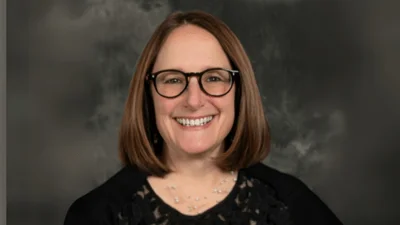Congresswoman Mary E. Miller | Official U.S. House headshot
Congresswoman Mary E. Miller | Official U.S. House headshot
Local levee districts along the Upper Mississippi River — a primary channel for moving Illinois grain to export facilities — would have more flexibility to maintain their flood protection infrastructure under a federal bill introduced Tuesday.
Titled the "Upper Mississippi River Levee Safety Act," the bipartisan legislation is championed by U.S. Rep. Mary Miller, R-Oakland, and co-sponsored by U.S. Reps. Mike Bost, R-Murphysboro; Darin LaHood, R-Dunlap; and Eric Sorensen, D-East Moline.
“This bill is a critical step to ensure that levee operators have the tools and flexibility they need to do essential maintenance along the Mississippi River,” Miller said in a statement.
“The Mississippi levees protect countless homes and thousands of acres of farmland, and I’m proud to lead the effort in the House to protect Illinois communities from future flood threats," Miller said.
LaHood said he was proud to co-sponsor the bill because the inland waterways of central and northwestern Illinois "are critical to the economic viability of our communities and allow small businesses, farmers and manufacturers to export commodities around the world."
Bost agreed, noting that "farmers and families living along the Mississippi River know how devastating floods can be to our low-lying communities" and "oftentimes, our levees are all that stand between our people and the dangerous effects of a natural disaster."
The bill is endorsed by Illinois Farm Bureau, the Upper Mississippi, Illinois & Missouri Rivers Association (UMIMRA) and Corn Belt Ports.
“Illinois Farm Bureau greatly appreciates Rep. Miller’s leadership on this effort,” said IFBPresident Richard Guebert Jr. “Congresswoman Miller recognizes that our waterway infrastructure requires continued investment in upgrades and maintenance if we are to maintain our competitive advantage in global trade.”
Although the bill's introduction comes as the Mississippi River is again experiencing extremely low water levels, it responds to issues that stem from perennial flooding events like when the river crested to historic highs this April, or in 2008, 2013, 2014 and 2019, when major flooding caused billions of dollars in damage to local communities. Damage costs associated with those events were partially so excessive due to outdated flood frequency and flood profiles used by the U.S. Army Corps of Engineers when making assessments of levee infrastructure and setting design plans for local levee districts to implement improvements.
That modeling and each district's level of design and protection is based on the benefits protected, with rural districts set at a 50-year flood frequency design profile; rural and lower-populated urban districts set at 100-year frequency; and more concentrated urban and industrial areas set at 500-year frequency.
But they rely on outdated rainfall and flow frequency data, and guidance from the Corps often has not been supportive of districts' ability to maintain their original level of protection as flow frequencies have shifted over time.
“As the only meteorologist serving in Congress, I know how devastating the impacts of extreme weather can be to families, neighborhoods and property,” Sorensen said, adding he backs the legislation because it supports the state's ag industry and protects river communities.
Under the bill, the Corps would be required to update the flood probabilities used to set design standards for levees and floodwalls, using the most recent flood frequency profiles no less than every 20 years.
It would cover Upper Mississippi River District federal levees or floodwalls from Guttenberg, Iowa to Hamburg, Illinois, and levees south of Hamburg to Cape Girardeau, Mo. The bill also calls for adequate public input during the periodic updates of the flow frequencies profiles and clarifies that "maintenance" includes maintaining the local districts' original or prior-approved level of protection, while keeping protection voluntary and at local expense. Provisions of the legislation could ultimately be included in the 2024 Water Resources Development Act, and if so would represent "one of the most pivotal initiatives in the past three decades to reduce potential future flood-related damages," said Mike Klinger, said Mike Klinger, UMIMRA chairman.
View the full story from Farm Week here.
Original source can be found here.


 Alerts Sign-up
Alerts Sign-up